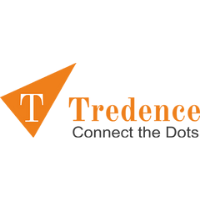
Tredence
View Brand PublisherWith a ‘Humanising AI’ approach to problem solving, Tredence is leapfrogging enterprise AI adoption
Artificial intelligence (AI) is often celebrated as a tool for competitive advantage, differentiation and amplified productivity gains, however the approach towards value identification, developing solutions and realising their value still follows the traditional methods and is constrained by last-mile adoption issues.
While there are several reasons that might be attributed to such low adoption of AI capabilities, a key factor is the lack of a humanising approach to AI. “A humanising approach towards an AI-backed solution helps in driving impact on ground and enables end-users to make significant progress with business processes,” believes Tredence, Chief Innovation Officer, Soumendra Mohanty.
A leading data science and AI engineering company, Tredence has over the last eight years delivered pragmatic and actionable AI solutions, and takes an ‘inclusive’ approach to problem solving which is much different from the siloed approach that most other data science companies go for.
Soumendra says that Tredence was launched after its founding team saw how key gaps in business analytics were impacting last-mile adoption of AI-driven solutions. “Everybody was approaching analytics in a standard way. Their approach was: here is a problem statement, take some data, look at some algorithms and then perform an analysis on it. We believed that the job wasn't at all about compiling observations in a PPT, but ensuring that the insights you were generating were actionable and creating impact. They should have the potential to be embedded into a larger organisational ecosystem. There was a last-mile adoption problem which the company aimed to solve, when it started. The company was founded by three founders and now has over 800+people attached to it with the spirit of entrepreneurship embedded in the organisation's DNA.”
Taking the road less travelled
According to Soumendra, business analytics is not just about data, algorithms and automation. “Such traditional approaches have been the reason behind the low adoption of AI. Not all problems require AI, similarly not all data is equal and not all end-users want the same thing. Therefore, before you even jump to solutions, you need to think: why this problem statement exists, where does it happen, who is impacted and what outcomes one should aim for. This is what we mean by humanising AI, data, algorithms, platforms, etc comes later. One should start with an ability to re-imagine the problem statement in a holistic way, employ design thinking and apply rapid prototyping, experiment and validate a potential outcome for end-users,” he adds.
Soumendra also says that the ideal solution would not only be based on enterprise data, but also on relevant external data. “A streamlined approach using an ensemble of algorithms helps you better operationalise a solution while leaving very little room for surprises and end user adoption issues.”
Given Tredence’s commitment to last-mile adoption of AI solutions, the company launched Tredence Studio earlier in June 2021 with the objective of moving on from the status quo and conceptualising a platform where it could co-innovate with the client, industry SMEs, academia and partners. “The philosophy behind Tredence Studio is to create a platform where all the stakeholders can have an immersive experience and look at problem solving in a new light,” explains Soumendra.
The Tredence Studio aims to help enterprises with value identification and value realisation and is powered by pre-built AI and analytics accelerators, process maps, design patterns, rapid prototyping capabilities and simulation scenarios to validate business outcomes even while the solution is getting developed. The future releases of Tredence Studio aims to offer the platform as an enterprise innovation marketplace for businesses looking to scale while leveraging frontier technologies like AI.
Learners for life
Putting the spotlight on the company's focus on continuous learning, Soumendra says that the Japanese concept of 'shoshin' is an important part of Tredence's ideology. The word means a 'beginner's mind'. It refers to an attitude of eagerness to learn and having an objective approach while studying a subject, just like a beginner would irrespective of one's level of knowledge.
"Our focus on shoshin has led us to change our outlook towards problem-solving, client conversations, capability development, solution design, and upskilling employees, whenever needed," says Soumendra.
Talking about the challenges the team faced while launching two new products — MLWorks and Tredence Studio — during the COVID-19 pandemic, he says the crisis created an experience depth. “Given how critical creativity is to analytics, we needed to collaborate and brainstorm with clients and teams to design our solutions. With the social distancing norms we were supposed to follow and people dealing with health challenges, it was difficult to do so. There was a stark realisation that everybody is looking for ways to innovate together, where they could challenge each other and start developing things. With an aim to give our clients a platform to co-innovate, Tredence Studio came into the picture.”
Soumendra said Tredence has always believed in a culture of continuous learning, the pandemic gave us a window of opportunity to redefine Tredence’s working style. “We went back to our clients and worked backwards. We asked them about the problem statements they would like to solve but are unable to solve because of various reasons. We offered them a highly collaborative environment for co-innovation and pivoted to what business outcomes make sense and then started working towards those proactively,” he adds.
Explaining the vision behind Tredence Studio, Soumendra said that the platform will actually enable clients to think of use cases not only on hand but also those they’re likely to face in future. “Unlike other projects, analytics solutioning requires rapid prototyping, thinking of what-if scenarios and possible simulations because the problem statement that you start with is rarely what you end up solving. We encourage our clients to bring their use cases and solve them with our capabilities along with our business subject matter experts.”
But, what makes the platform ideal for budding entrepreneurs? For starters, you're not starting from zero and the quality of the outcome is predictable to a large extent as it is based on best practices, according to Soumendra. Moreover, the collaborative model of innovation helps in accelerating the development and deployment of the solution, while fostering an environment of continuous learning for all stakeholders.
For a company that's taken the road less travelled and managed to grow exponentially, the future is filled with new possibilities. Agreeing, Soumendra says, “Recruiting only data science talent can’t be the way forward. Many of these low code or no-code platforms are going to disrupt this space and hence new tools and new methodologies need to be augmented with core data science skills. You need more pre-built industry-led solutions that humanise technologies like AI, which is where we see Tredence heading and keep solving such problems. Humanising AI for business problems is going to become much more mainstream in the future.”







